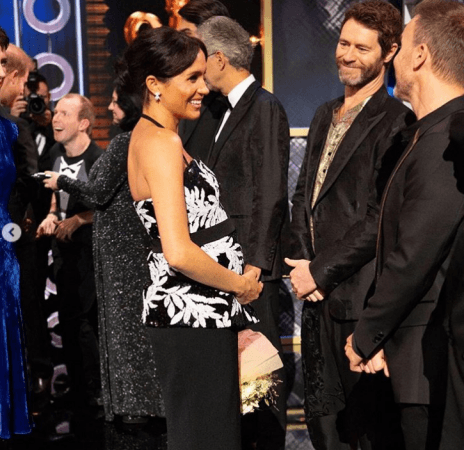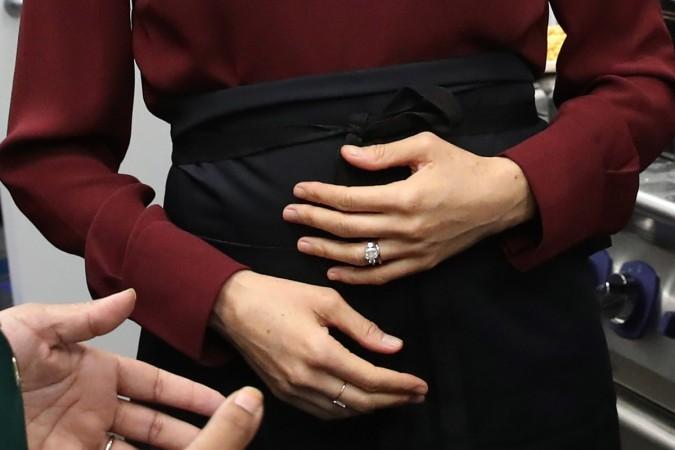
Meghan Markle is pregnant with her first child and the Duchess of Sussex is seen almost constantly cradling her baby bump ever since it was announced that she is with a child. While it is not uncommon for pregnant women to hold their baby bump, why though is it done? Is there any scientific reason for this habit?
A report by People notes that since Kensington Palace made the announcement, in the weeks that followed, both Prince Harry and Meghan Markle travelled extensively through Australia, New Zealand, Fiji, and Tonga. All through this tour, Markle can be seen holding her bump. In the months that followed and as the bump got more prominent, she is seen cradling her baby all the time. This is even seen in candid shots of the couple till date.

The report notes that Meghan Markle's surprise appearance at the British Fashion Awards took this cradling to a new level. She was seen highlighting the bump by holding it both above and below her belly.
Mary Jane Minkin, obstetrician gynaecologist of Yale University pointed out that the cradling could be a sign that Markle, "... shows that she really cares for her baby, and that's terrific."
Minkin also, however, pointed out that the idea of "bump cradling" being medically beneficial to the unborn child, which has led many to think that there is some kind of scientific reason as to why she is doing it is "not evidence-based".
"There really isn't a lot of data showing that touching the belly really calms the baby," Minkin says.

Georgia Rose of Village Maternity in New York City, midwife and practitioner for over two decades and from Columbia University, has said that there is evidence to show that mother's voices can be heard by a baby in the womb and that is known to calm it down. She says that the touch of a mother could also have similar effects on the child.
Rose also notes that Meghan Markle could be cradling her bump unconsciously, this could be akin to a mother patting her child on the head or squeezing its arm lightly out of affection without even noticing it.
"This is a totally normal thing that mothers do, and they do it instinctively and naturally," she explains.


!['Had denied Housefull franchise as they wanted me to wear a bikini': Tia Bajpai on turning down bold scripts [Exclusive] 'Had denied Housefull franchise as they wanted me to wear a bikini': Tia Bajpai on turning down bold scripts [Exclusive]](https://data1.ibtimes.co.in/en/full/806605/had-denied-housefull-franchise-they-wanted-me-wear-bikini-tia-bajpai-turning-down-bold.png?w=220&h=135&l=50&t=40)


!['Had denied Housefull franchise as they wanted me to wear a bikini': Tia Bajpai on turning down bold scripts [Exclusive]](https://data1.ibtimes.co.in/en/full/806605/had-denied-housefull-franchise-they-wanted-me-wear-bikini-tia-bajpai-turning-down-bold.png?w=220&h=135)


![Nayanthara and Dhanush ignore each other as they attend wedding amid feud over Nayanthara's Netflix documentary row [Watch]](https://data1.ibtimes.co.in/en/full/806599/nayanthara-dhanush-ignore-each-other-they-attend-wedding-amid-feud-over-nayantharas-netflix.jpg?w=220&h=135)